The Noblest Car Fans Love Citroën, And Other Citroën Rendezvous Dispatches

It’s been almost twenty years since France officially declined to join George W. Bush’s Iraq War. While its refusal to sign on to the epic American misadventure based upon non-existent weapons of mass destruction initially earned the French considerable opprobrium on these shores – Freedom Fries, anyone? – today the attitude is more one of the “France, who?” variety. To fly the French flag in America now is more an act of curiosity than one of sedition.
When it comes to French automobiles in the U.S., so it has always been, though things have gotten worse. Despite French brands like Peugeot and Citroën’s significant roles in the fortunes of Stellantis -- the name given to the 2020 merger of Italo-American FCA and French PSA that formed the world’s fourth largest automaker-- the new company has chosen not to grace us Yanks with its French brands, which exited these shores in 1992 (Peugeot) and 1974 (Citroën.) Instead, the combine has chosen instead to reinforce our sorry impression of European industry with Italy’s ailing Fiat and always struggling Alfa Romeo, while relying on American brands Jeep, RAM, Dodge and Chrysler (and mostly the first two) for the bulk of its profit. Likewise French giant Renault, burned twice before in the USA and last seen selling new cars here in 1987, has chosen to focus its energy in the Land of the Free on the offerings of its not always beloved corporate roommate, Nissan.
Despite it all, Gallic machinery continues to claim a small if enduringly loyal following in America. For proof and a quick dip into the soupe française that we find ourselves missing more and more as new cars become increasingly anodyne and national-origin free, there was no better prescription last weekend than to take the cure with a trip to Ballston, New York, not far from the venerable spa town of Saratoga Springs, for the annual Citroën Rendezvous. An event catering to owners and fans in the Northeast whose 2022 gathering some told us was the largest French car shindig on these shores, ever, with more than 200 cars in attendance, was by any measure a rollicking success.
A quick dip into the impressive field on an unseasonably chilly Saturday reminded fans of French style and idiosyncratic but clever engineering not just how much has been lost but also of how much has been preserved.
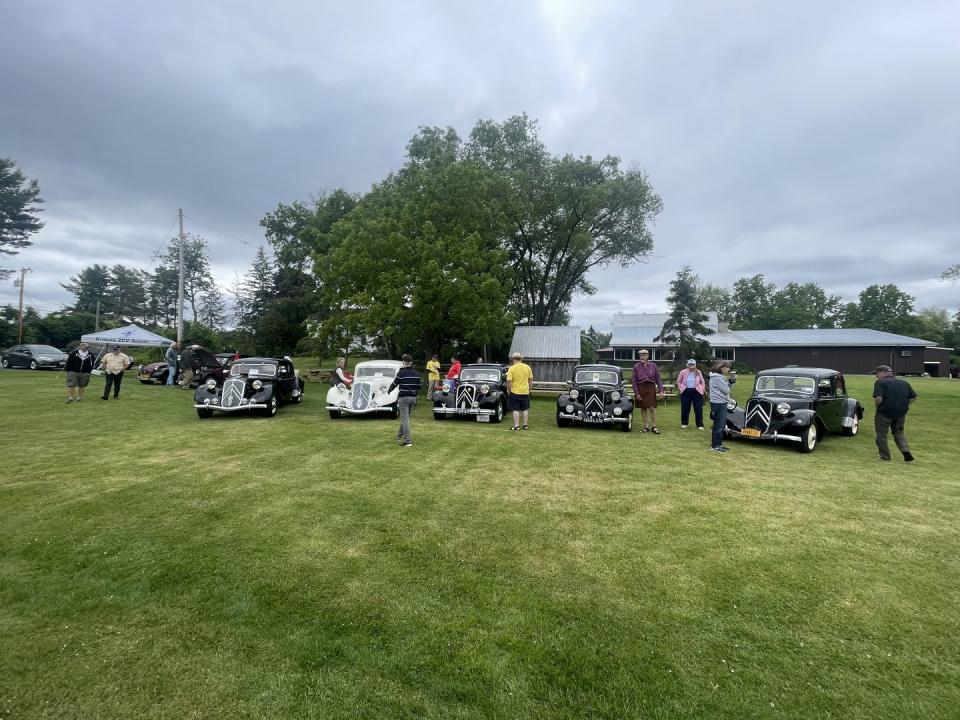
To begin at the beginning, the oldest cars in attendance were the Traction Avants, introduced in 1934 by company founder André Citroën. Though the massive investment in the new model would soon see him losing control of the company he’d founded in 1919, the Traction sold well into the 1950s, in Legere (light) or larger Normale configurations, sailing for decades on the universal wonder that greeted its release, not just for its revolutionary front-wheel drive, but also for its strong and space efficient unit body construction--a party trick rolled out by the Budd Company of Philadelphia but first employed by the French. Indeed, the formula that André Lefèbvre, the project’s engineer, laid down–with long travel suspension by torsion bar, hydraulic brakes and many other modern comforts, all dressed up in a simple but elegant package, thanks to designer Flamino Bertoni, (no relation to the Italian design house that would later go on to do much work for Citroën)--laid a path the company followed for the next half century or more.

The Traction was followed chronologically and spiritually by Citroën’s greatest hits, the humble but scrappy 2CV, aka Deux Chevaux (or two horses,) and the DS, also styled by Bertoni and arguably the greatest design icon in automotive history. Both were well represented on the field, with 2CVs spanning much, if not all, of its incredible 42-year production run (1948-1990) and enough DS’s to occupy the mind for days past our visit, pondering the evolution of a car whose splendid shape, many varieties, monocoque construction with lightweight, non-stressed panels bolted on, all-wheel inboard disc brakes and self-leveling, hydro-pneumatic suspension continue to fascinate, generation after generation.
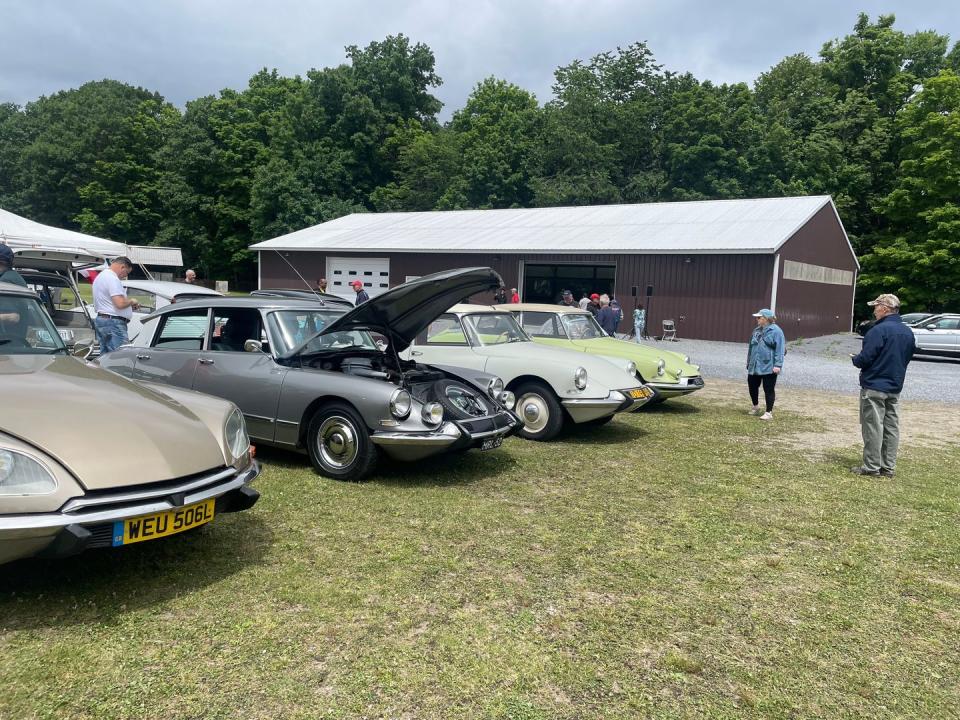
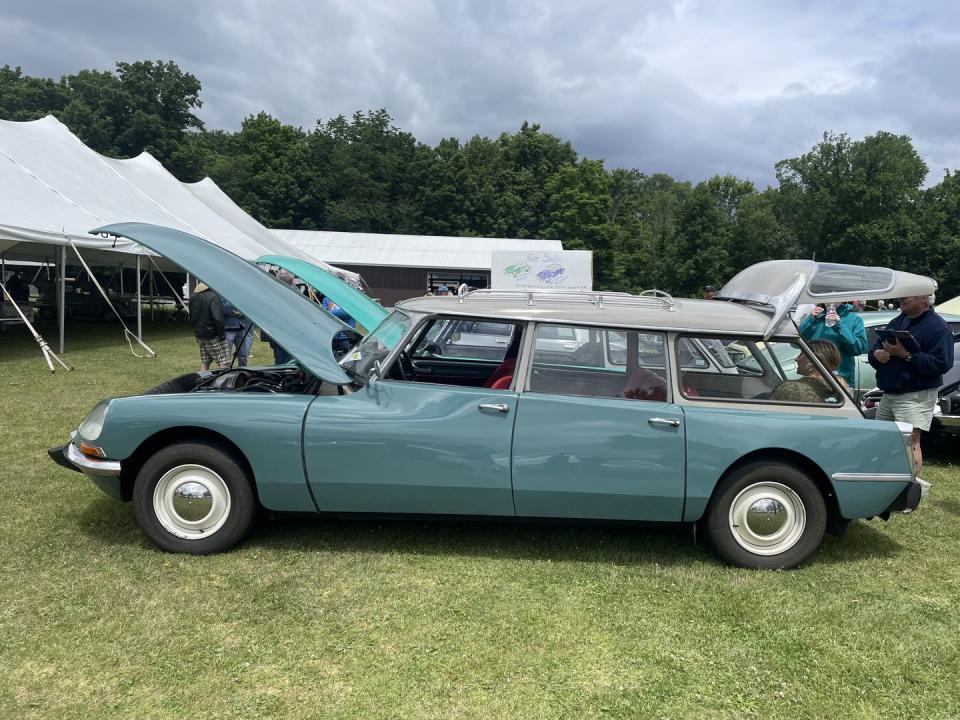
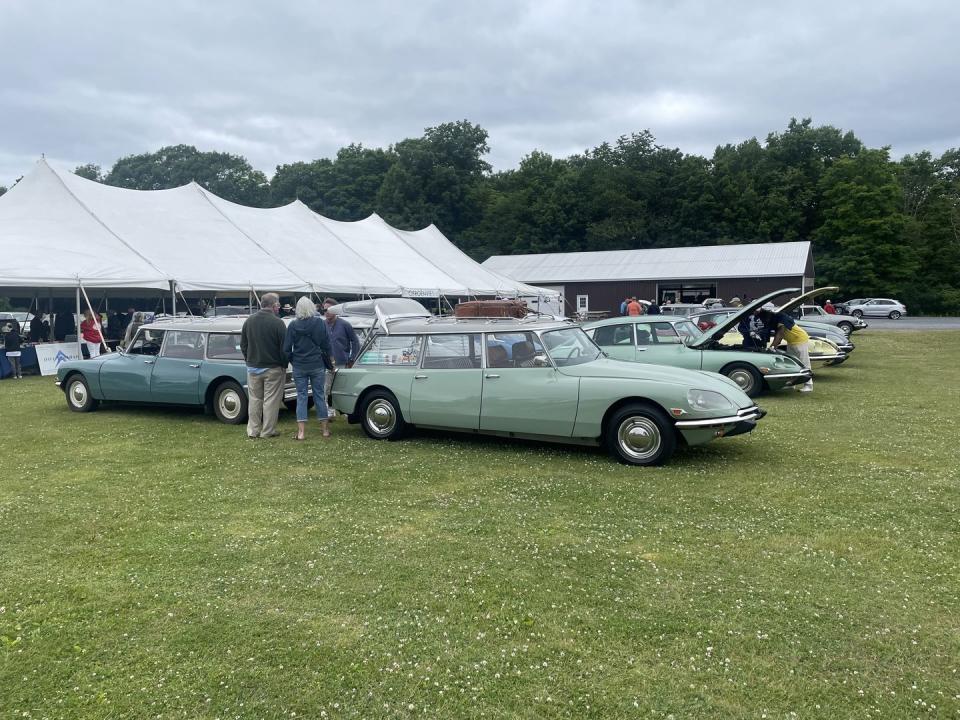
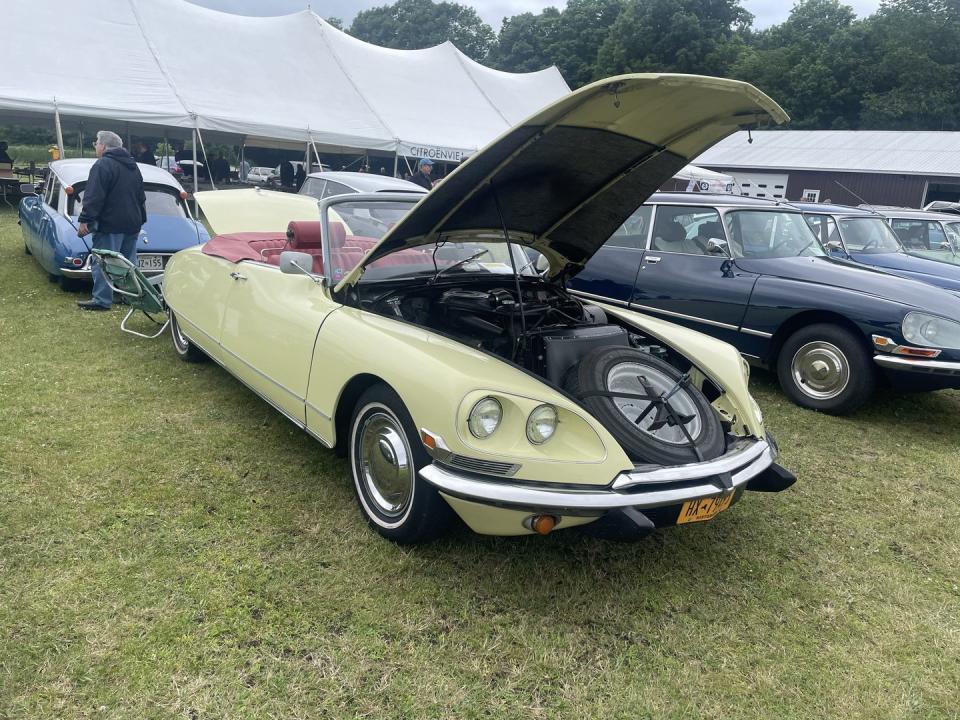
Along with wine and cheese, the DS, produced from 1955-1975 is something of which the French are most proud, as are all of today’s owners. Surveying a field with sedans, Safari wagons and a lone convertible, one can’t help thinking, If it is wrong to covet thy neighbor’s cars, then I don’t want to be right.

 Yahoo Autos
Yahoo Autos 